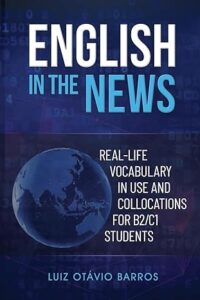A lot of people are preparing for IELTS at any point in time, whether it be to earn a Masters or PhD in an English-speaking country, go on a working holiday, or for immigration purposes.
Being able to produce writing tasks that meet the requirements is key to getting the necessary score. This blog post will give a brief overview of the writing section as well as the details of task 2.
Before I continue any further, I should add the caveat that I am not an IELTS examiner. I have studied the test thoroughly over the past five years through a variety of websites as well as official test books and books from various publishers. I find the books that are not official and the websites to be of varying quality, so I have analyzed these sources and taken them with a grain of salt.
Considering the overall writing section, you have one hour to produce answers for task 1 and 2. Task 1 is some type of visual with data that you need to summarize, while task 2 is an essay about a topic that requires you take a position or explain a problem.
They recommend that you spend 20 minutes on task 1 and 40 minutes on task 2; task 2 is worth twice as much as task 1, so it makes sense to focus more time there.
Which task do I start with?
I recommend starting with task 2. My reasoning is as follows: If you take 45 minutes to complete task 2, you can still produce a task 1 in 15 minutes. It won’t necessarily be the best task 1 that you can write, but it should still be decent. If you start with task 1, however, you might take 25 or even 30 minutes without realizing it. That leaves you with 30 or 35 minutes to produce a task 2 essay. While that is possible, it is less than ideal considering the weight that writing task 2 carries compared to task 1.
How do I answer task 2?
To give you an idea of what to expect with writing task 2, here is a prompt from the official IELTS website:
The first car appeared on British roads in 1888. By the year 2000 there may be as many as 29 million vehicles on British roads.
Alternative forms of transport should be encouraged and international laws introduced to control car ownership and use.
To what extent do you agree or disagree?
Give reasons for your answer and include any relevant examples from your knowledge or experience.
Write at least 250 words.
So, one of the important things is your structure. For this essay, I recommend 4 paragraphs: an introduction, two main paragraphs, and a conclusion. Your introduction has to paraphrase the topic, mention the reasons for your position, and then clearly state your position in the last sentence. Each of your main idea paragraphs need a strong topic sentence that is related to the reasons you mentioned in the introduction, and you need to explain them in more detail and give an example. Last but not least, the conclusion needs to restate your position and the reasons for that position. It’s not always easy, but if you can finish the conclusion with a sentence that everyone can agree with, it’s a nice way to wrap things up. For the essay above, my concluding sentence might be the following: “While not everyone is in agreement with government control and regulations, the reduced pollution and less traffic that will come as a result of more public transportation and car ownership regulations will be a positive result for everyone on the road.”
There are some other elements that you need to consider. Namely, the length of your writing, the words and structures that you use, and cohesion.
First of all, your essay must be at least 250 words. If it does not meet that limit, you are penalized by half a band score with your overall writing score. It will be beneficial to practice writing task 2 essays on the official answer sheet and counting the words. Once you do that, you will have a good idea of what 250 words of your handwriting looks like on the answer sheet; that way you don’t lose valuable time counting when taking the test. You can see a copy of the official answer sheet by clicking here.
The next element to consider is your word choice and the structures you use. While it is true that you don’t want to repeat the same word over and over again, you can’t always use a synonym for every word in your essay either. In the same way, you don’t want to repeat the same structures (such as present simple, the past simple passive, simple sentences, etc) repetitively. You will want to use a variety of structures throughout your writing. It might be hard to find a balance if you’re not used to writing in English, but with practice it will become easier.
The last element to produce a quality essay is cohesion. This means how well-connected your essay is on the whole and how your ideas flow from one to the next. If you use a clear structure (as indicated earlier), that will take care of most of the work. Another part of this is using transitions and connectors. Using phrases such as In addition, Another idea to consider is, After that, As a consequence, and more helps the reader move from one idea to the next.
OK, so how do I use the 40 minutes to write my answer?
40 minutes might seem like a long time, but it actually goes by very quickly when you’re taking the test.
STAGE ONE: PLANNING
First of all, I suggest spending 5 to 8 minutes understanding the question and organizing your ideas. Underline the main topic that you need to write about as well as the exact question you have to answer. Then, start thinking about your position and the ideas that you have to support your answer. You can create a short outline with keywords to get organized before your write. For the example provided above, my outline might look something like this:
Introduction: lots of cars on the road, problems of pollution and traffic, people need to get around the city, agree with idea of alternate transportation and regulation of car ownership
Main paragraph 1: pollution and traffic are big problems in most cities, pollution causing respiratory problems for many people and global warming, traffic due to so many cars on the road causes lost productivity and is frustrating, examples of Santiago life
Main paragraph 2: people need to get from one place to another, they often drive in cars alone, sense of status, subway lines and buses are good alternatives for most people, example of subway and bus lines in Santiago
I would then write the conclusion later on based on the information in the previous three paragraphs.
STAGE TWO: WRITING
Now that I have my ideas outlined, I can spend about 25 minutes writing. The more detailed my outline is, the easier my writing will be. By the time I get to the conclusion, I should have a good idea of how I want to restate my ideas and conclude the essay.
STAGE THREE: REVISION
This stage can actually occur during the writing stage and as its own stage. I have heard that some people actually reread each sentence after they write it, and they also reread each paragraph after they write it. In this way, they are checking their spelling, grammar, word choice, and capitalization as they go.
In any case, it’s a good idea to reread your ideas and be sure they are clear in the last 5 or so minutes.
How is my answer scored?
Your answer is scored using an evaluation rubric. There are four areas that are considered: task achievement (how well you answered the question), coherence and cohesion (your overall structure and how connected your ideas are), lexical resource (your use of vocabulary and word choice), and grammatical range and accuracy (your use of a variety of structures and how correctly you use them). If you’d like to see the public version, you can click here.
One important thing to note is that you can still get a score of 8.0 or higher even if you have mistakes in your writing. They know that you are writing under pressure, so there is an allowance for mistakes. The same is true for the speaking section of the test.
Conclusion
Producing academic writing that meets the demands of standardized tests like IELTS under the time constraints and after completing other mentally-demanding tasks is not easy, but it can be done. I hope this blog post helps anyone reading in their IELTS preparation.
Feel free to leave a comment or question below. Thanks for reading!


